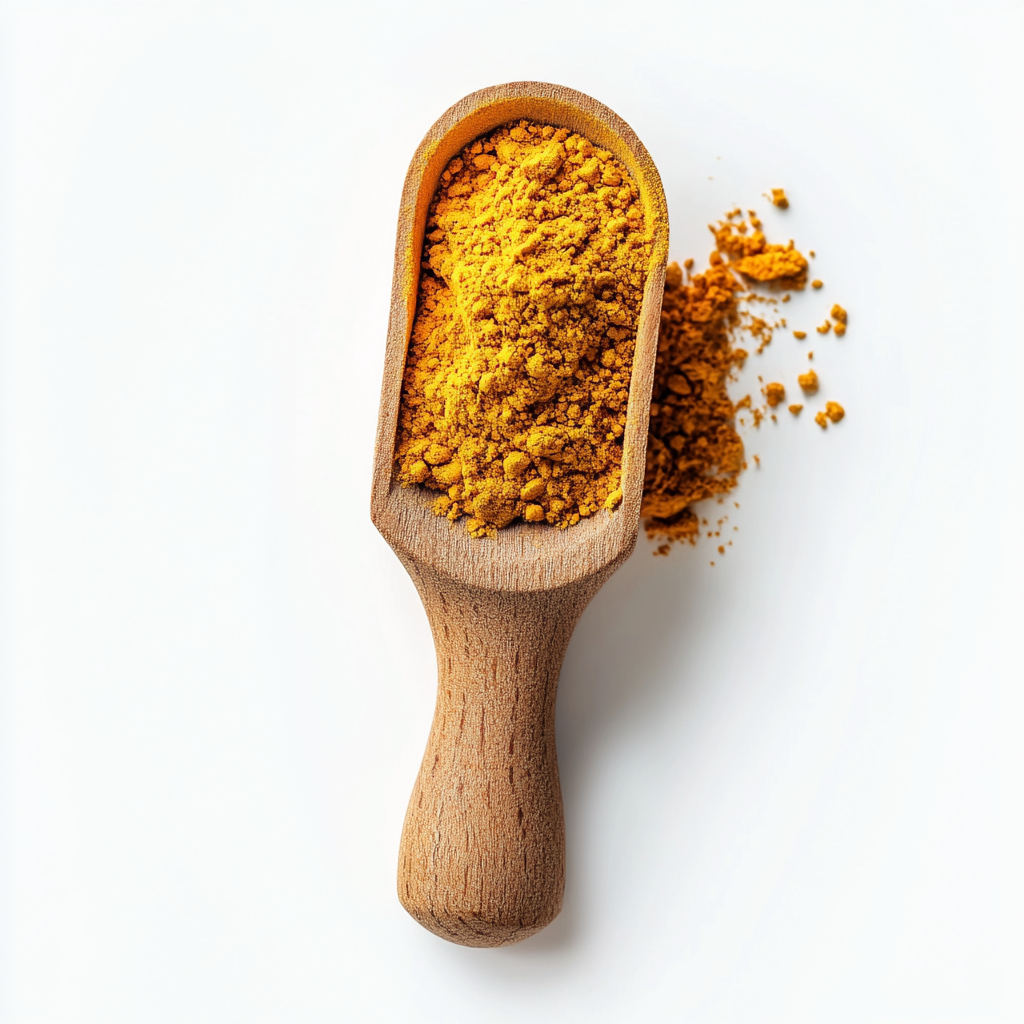Understanding Turmeric: A Quick Introduction
Turmeric is a vibrant yellow-orange root commonly used in cooking, particularly in soups, stews, and curries. People know turmeric for its unique earthy flavor and anti-inflammatory benefits. It has become a key ingredient in many traditional and modern recipes. Its versatility allows it to blend ideally with various spices and ingredients, enhancing both flavour and health benefits.
People often use turmeric fresh or in powder form. However, many recipes, such as soups, benefit from the fresh root’s potent aroma. To maximize its use, it’s crucial to learn the proper techniques for cutting and preparing turmeric. This insures you preserve its flavour while avoiding common pitfalls, such as staining or uneven slicing. But first, having the right tools and preparation techniques can make all the difference.
Essential Tools for Cutting Turmeric
Cutting turmeric effectively starts with equipping yourself with the right tools. Using improper equipment can lead to messy cuts or even safety hazards. Here’s what you’ll need:
- A sharp chef’s knife: A sharp blade insures clean cuts and reduces the risk of accidents caused by excessive force.
- A sturdy cutting board: Opt for a non-porous board to avoid turmeric stains. Plastic or glass boards work best.
- Vegetable peeler: This is essential for removing the tough outer skin of fresh turmeric root.
- Gloves (optional): Turmeric’s natural pigments can leave stubborn stains on your hands, so wearing gloves is advisable.
- A damp cloth or paper towel: Keep this handy to clean surfaces immediately after cutting turmeric.
Using these tools insures that the cutting process is efficient and stain-free. Remember, sharp tools not only make the process easier but also reduce the chances of damaging the turmeric root. By properly preparing the turmeric, you can easily incorporate it into dishes. If you’re looking for ideas, learn how to transform soups with turmeric’s magical properties.
Preparing Turmeric for Cutting
Before you begin cutting turmeric, proper preparation is key. This step keeps the turmeric fresh and of good quality. This is important for soup recipes that need its strong flavor.
- Wash the turmeric root: Rinse it thoroughly under running water to remove any dirt or debris. Farmers often harvest fresh turmeric with soil still attached.
- Dry the root: Use a clean cloth or paper towel to pat the root dry. Excess moisture can make it slippery and harder to cut.
- Inspect for imperfections: Look for any blemishes or soft spots, as these can affect the taste and texture of your soup.
- Trim the ends: Use your knife to remove the tough ends, as they can be fibrous and difficult to cut evenly.
By following these steps, you will have a clean turmeric root. This root is ready to cut and will add natural flavors and health benefits to your soup.
Slicing Techniques for Turmeric
When learning to cut turmeric for soup, the slicing technique is crucially important. It helps achieve the right texture and flavor. Uniform slices allow for even cooking and better infusion of the root’s properties into the soup.
Common slicing techniques:

- Thin slices: Ideal for soups where turmeric is simmered for an extended time. Thin slices release flavors quickly.
- Matchsticks (julienne): This style works best for chunky soups or stews where the turmeric’s texture is part of the dish.
- Minced or grated: When you need a strong, quick burst of flavour, grating the turmeric root is the best option.
Tips for slicing:
- Slice against the grain to minimize fibrous textures.
- Use controlled motions to avoid slipping, especially if the turmeric is small or uneven.
Uniform slicing not only increases the cooking process but also insures your soup has a consistent flavour and appearance.
Achieving Uniform Cuts: Why It Matters
Getting even cuts when working with turmeric is not just for looks. It also affects the quality and flavor of your soup. Unevenly cut turmeric pieces can cause:
- Overcooking or undercooking: Larger chunks take longer to cook, while smaller pieces may burn or lose their flavour quickly.
- Inconsistent flavor distribution: Even cuts help turmeric mix well. This way, every spoonful of soup has the same rich flavor.
- Uneven texture: For soups that include turmeric chunks, consistency in size makes the dish more appealing.
To maintain uniformity:
- Measure slices by aligning them on the cutting board.
- Use a mandoline slicer for precision, especially for thin or julienne cuts.
Investing time in consistent cutting techniques insures that your soups not only taste great but also present beautifully. Discover creative ways to use turmeric in chicken noodle soup here.
Peeling Fresh Turmeric Root
Peeling fresh turmeric is an essential step, especially for soups that require clean and smooth slices. The outer skin of turmeric is tough and can introduce unwanted bitterness to your dish.
How to peel turmeric effectively:
- Use the edge of a spoon to scrape off the skin gently. This method prevents excessive waste.
- For tougher skin, opt for a vegetable peeler, applying light pressure to avoid removing too much flesh.
- If the turmeric is too dry, soak it in water for a few minutes to loosen the skin.
Peeling not only improves the root’s flavor but also helps achieve smoother slices. Always peel turmeric before you attempt cutting it for any soup recipe.
Turmeric Cutting for Soup Varieties
Understanding how you cut turmeric for soup depends on the type of soup you’re preparing. You can slice, grate, or mince turmeric to complement various recipes.
creamy soups:
- Opt for thin slices or grated turmeric. This insures the root blends ideally into the soup’s smooth texture.
hearty soups:
- Julienne or diced pieces are best for chunky vegetable soups, as they add a burst of flavour and texture.
broth-based soups:
- Use larger slices to infuse the liquid with turmeric’s vibrant colour and earthy taste. You can remove these pieces before serving.
By changing how you cut the ingredients for each soup, you make sure the turmeric fits well. This way, it adds flavor and provides health benefits. Not sure about turmeric’s versatility? Examine whether turmeric works in noodle dishes here.
Tips for Maintaining Knife Sharpness
Sharp knives are crucial when cutting turmeric because dull blades can crush the root, leading to uneven cuts. Maintaining your knife’s sharpness also insures safety during food preparation.
How to keep your knife sharp:
- Regular honing: Use a honing rod after each use to align the blade’s edge.
- Sharpening stone: Sharpen your knife regularly using a whetstone for a razor-sharp finish.
- Proper storage: Store knives in a knife block or magnetic strip to protect the blade.
- Avoid hard surfaces: Always use cutting boards made of wood or plastic to prevent dulling the blade.
Keeping your knives sharp makes cutting turmeric for soup easier. It also helps your kitchen tools last longer.
To cut turmeric for soup, you need to know the root’s special qualities. Use the right tools and techniques. To improve the flavor and look of any soup, prepare turmeric properly. Make sure to cut it evenly and keep your knives sharp. Whether you are making a hearty vegetable stew or a light broth, these tips will help turmeric shine in every recipe.
# How Do You Cut Turmeric for Soup? A Complete Guide
Turmeric, often referred to as a golden spice, is a cornerstone of numerous recipes. When preparing turmeric for soup, getting the cut just right increases both flavour and health benefits. This article explains how to cut, store, and use turmeric. It also includes cleaning tips and common mistakes to avoid.
Storing Freshly Cut Turmeric
Proper storage preserves the freshness and flavour of turmeric. Once you’ve mastered how to cut turmeric for soup, it’s crucial to keep it fresh for future use.
- Refrigeration Tips:Store turmeric in an airtight container to retain moisture.
- Wrap it in damp paper towels before placing it in the refrigerator. This prevents dehydration.
- Freezing Options:Lay cut turmeric pieces on a baking sheet to pre-freeze, then transfer to a freezer-safe bag.
- Label the bag with the date for easy tracking.
Always aim to use freshly cut turmeric within one week when refrigerated or within six months when frozen. Proper storage insures the turmeric retains its health benefits and robust flavour.
Incorporating Cut Turmeric into Recipes
Knowing how to cut turmeric for soup is just the first step. Incorporating it correctly insures maximum flavour and nutrition.
- Sauté Before Adding:Turmeric’s earthy flavour blooms when lightly sautéed in oil.
- Add it during the initial stages of cooking for soups, broths, or stews.
- Grating for Intensity: Use finely grated turmeric for a more pronounced flavor.
- Be mindful of quantity; turmeric can overpower other ingredients.
- Blending into Broths:Add sliced or minced turmeric to simmering broth and strain before serving for a smoother texture.
Fresh turmeric works well in both clear soups and creamy bisques. Experiment with small amounts first to balance flavors.
Alternative Methods: Pre-cut and Powdered Turmeric
For those who are short on time, alternatives to freshly cutting turmeric can be a lifesaver. Each has its benefits, though fresh turmeric often provides the best health impact.
- Pre-Cut Turmeric:Available in vacuum-sealed packs.
- Convenient but may lack the same vibrancy as freshly cut turmeric.
- Powdered Turmeric:Easy to measure and mix directly into soups.
- Choose organic powders for better quality.
- Turmeric Paste:A blend of turmeric, water, and oil, ideal for soups.
- Pre-make and store in the refrigerator for up to a week.
While these options are easy, learning to cut turmeric for soup makes it more authentic and improves the experience.
Health Benefits of Adding Fresh Turmeric to Soup
Including fresh turmeric in your soup isn’t just about flavour—it’s about boosting your health.

- Anti-Inflammatory Properties:Turmeric contains curcumin, which reduces inflammation.
- Ideal for soothing colds or joint pain.
- Rich in Antioxidants:Helps fight free radicals, promoting overall wellness.
- Supports Digestion:Turmeric aids in digestion, making soups lighter on the stomach.
- Boosts Immunity:Its antimicrobial properties strengthen your immune system.
Adding freshly cut turmeric to soups regularly can support a healthier lifestyle. Assure you incorporate it correctly to maximize these benefits.
Cleaning Up After Handling Turmeric
Handling turmeric often leaves stains on your hands, cutting boards, and utensils. Cleaning up effectively is vital.
- Preventing Stains:Use gloves when cutting turmeric to avoid yellow stains on your fingers.
- Line cutting boards with parchment paper for easier cleanup.
- Removing Stains:Scrub cutting boards with a paste of baking soda and water.
- For hands, use lemon juice or a vinegar solution.
- Washing Utensils:Soak stained utensils in soapy water immediately after use.
- Avoid using abrasive cleaners that may damage surfaces.
Keeping your workspace clean makes the process of preparing turmeric more enjoyable.
Common Mistakes to Avoid When Cutting Turmeric
When learning how to cut turmeric for soup, certain mistakes can affect flavour and texture. Avoid these common pitfalls:
- Cutting Too Thick:Thick slices may not cook thoroughly, resulting in a bitter taste.
- Aim for thin, uniform slices to assure even cooking.
- Skipping Peeling:While the peel is edible, it can be tough and detract from the soup’s texture.
- Use a vegetable peeler to remove the skin gently.
- Using a Dull Knife:Turmeric’s tough texture requires a sharp knife for precise cuts.
- A dull knife increases the risk of uneven slices or injuries.
- Overusing Fresh Turmeric:Too much turmeric can overpower your soup. Start with small quantities.
Being mindful of these mistakes improves your results and increases your confidence in the kitchen.
FAQs
1. Why is it important to learn how to cut turmeric for soup?
Cutting turmeric properly insures it cooks evenly and releases its flavour and nutrients effectively.
2. Can I use a food processor to cut turmeric?
Yes, you can use a food processor for larger quantities, but slicing by hand gives you better control over thickness.
3. Should I peel turmeric before cutting it for soup?
Peeling is optional but recommended to remove dirt and improve texture.
4. How much turmeric should I add to my soup?
Start with a small piece (1–2 inches) and adjust based on your taste preferences.
5. Can I mix fresh turmeric with powdered turmeric?
Yes, combining both can balance flavour and colour in your soup.
Mastering how to cut turmeric for soup is an essential skill for anyone looking to boost their culinary creations. From proper storage to incorporating it into recipes, fresh turmeric brings unparalleled flavour and health benefits to your table. While pre-cut and powdered options are convenient, the authenticity of fresh turmeric makes it worth the effort. With these tips, you can confidently add this vibrant spice to your soups and enjoy its many benefits.

